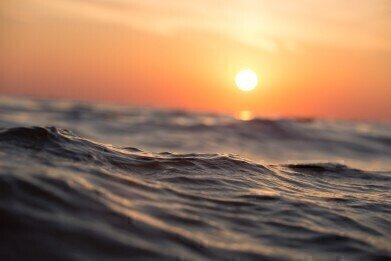Fuel for Thought
Scientists Discover New Hydrocarbon Cycle in the Ocean
Feb 27 2021
A new study from the University of California Santa Barbara (UCSB) has revealed an entire cycle of hydrocarbon emissions and recycling of which scientists were previously unaware. Just two types of marine cyanobacteria are responsible for adding an incredible amount of hydrocarbons to the ocean every year – all the while other microbes are simultaneously removing and recycling them.
Most of the hydrocarbons involved are pentadecane (nC15) and are found across 40% of the Earth’s surface. The discovery is quite astounding because of the sheer scale of the hydrocarbons that are being produced and consumed on a daily basis. At the same time, it’s also highly encouraging, given that it could potentially open up new avenues of research into how microbes operate in marine environments.
Mysterious microorganisms
Despite stringent standards for environmental monitoring in the UK and beyond, accidents do happen. Oil tankers suffer spillages and seeps and agricultural run-off is swept from the land into our waterways. Add to that the dumping of fuel by unscrupulous actors and there is often an abundance of hydrocarbons in the ocean. When such incidents do occur, it often falls to the smallest inhabitants to clean up the mess.
Microorganisms such as microbes are capable of removing those contaminants from their environment, though scientists still don’t fully understand how or why the process happens. For that reason, the UCSB discovery was all the more shocking, since it not only discovered an immense quantity of hydrocarbons being recycled in the ocean each day – but being produced, as well.
Small but mighty
The two cyanobacteria in question were found to be so industrious in producing pentadecane that they were responsible for generating roughly 500 times the amount of hydrocarbons that all manmade sources generate each year. That includes oil spills, natural seeps, intentional dumping and land run-off, adding up to no small amount cumulatively.
Even more amazingly, the cyclical nature of the ecosystem means that other microbes feast upon the hydrocarbons, ensuring that there are only ever approximately two million metric tonnes of the stuff present in the water at any given time. A by-product of that consumption is carbon dioxide, which is then taken in by the cyanobacteria and the whole process starts anew.
A delicate process
Verifying the results of the study was a tricky process, given that hydrocarbons are generated by humans in a variety of different ways. Perhaps the chief contributing factor is the combustion of the compounds as a fuel source, but they are also produced via cooking, smoking and painting. As such, the team had to refrain from all such activities while onboard their research vessel and position the ship downwind so that the diesel in their engine did not contaminate their study.
After collecting the samples, the researchers returned to dry land to verify that the hydrocarbons were indeed of biological and not anthropogenic origin. They did this via the use of gas chromatography, a simple scientific process which is used to determine tthe presence of flame retardants or other chemicals in a substance, among a variety of other uses. They then established that the samples were indeed produced by the cyanobacteria, confirming their remarkable discovery.
Digital Edition
PIN 25.2 Apr/May
May 2024
Safety - Carbon monoxide toxic and flammable gas detection Analytical Instrumentation - Density: A fundamental parameter at critical stages within the petroleum sector - Advancements and...
View all digital editions
Events
May 13 2024 New Orleans, LA, USA
May 14 2024 Tashkent, Uzbekistan
May 14 2024 Oklahoma City, OK, USA
May 15 2024 Lund, Sweden
May 15 2024 Copenhagen, Denmark


















